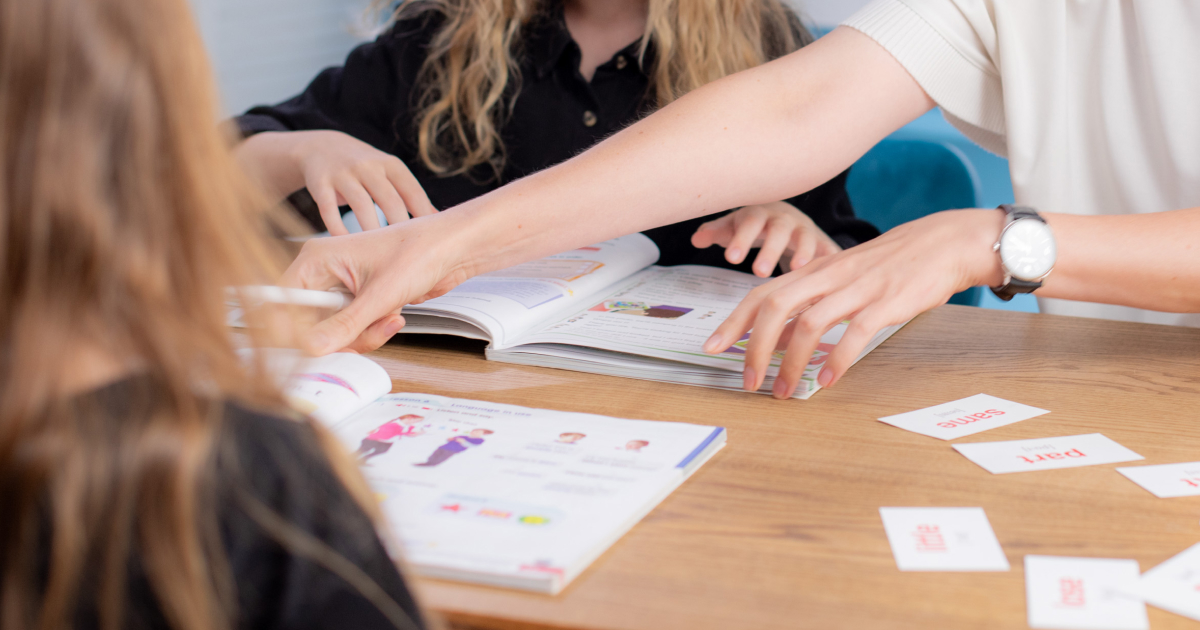The Whys and Hows of Co-Teaching in ESL Classrooms
- Cambridge English
- Teaching qualifications
- Activities
- Tips & Strategies
- Methodology

11.10.2023
There are four seasons in the year: spring, summer, autumn, winter…
I don't know about you, but I remember this text from my school years as well as that "London is the capital of Great Britain".
It is crucial for children to know and distinguish seasons and names of months not only in their L1, but also in English.
We divide the year into parts: seasons and months. That is why, just like the names of the days of the week, they are a fundamental concept. Knowing the names of the months, students can learn and talk about the seasons, holidays, birthdays, important dates, etc.
The names of the months come from Latin. Like the names of the seasons, some of them are spelled differently than they are read. It can be difficult for children to pronounce these names and remember the spelling.
Therefore, you will have to do your best to make these words stick in their heads.
Usually, we teach these concepts in kindergarten or primary school. First, we teach students to list the names of the months one by one, or in poems and songs, and then children learn to read and write them.

Discover the key to teenage motivation!
Motivate teens easily with us!Learning the names of the seasons and months certainly doesn't have to be boring.
Here is a selection of resources and ideas that will help you make this process more interesting and exciting for your learners.
With the help of songs, children not only learn the months and seasons, but also can move a little. So why not take a brain break and learn new concepts in one fell swoop?

For example, this classic poem, written over 500 years ago, tells the number of days in each month:
Thirty days hath September,
April, June, and November,
All the rest have thirty-one,
But February's twenty-eight,
The Leap Year, which comes once in four,
Gives February one day more.
And here is a little bit more modern poem where all the names of the months are presented:
January, February, March, April, May,
June, July, August, Hip Hip Hooray!
September, October, November, December
See all the months that I can remember!
The British Council offers interesting online listening tasks with the poem Spring to Winter.
What audiobooks can YL listen to?
Acrostic poems are another interesting way to learn about seasons and months. Poetry also introduces children to concepts such as rhythm and rhyme. When students read poems aloud or recite them, they become more confident. Acrostic poems, in addition to all of the above, show our students that it is possible not only to learn the language, but also to create something new and original.
Acrostic poem is a work of combinatorial poetry, a poem in which the first letters of each line, read from top to bottom, form a word or sentence, most often the name of the person to whom the acrostic poem is dedicated.
If we use acrostic poems to learn English, we can choose any words from any topic. For example:
S — sunny days
U — under the trees
M — making music
M — milkshakes and memories
E — everyone together
R — refreshed and relaxed
Acrostic poems do not rhyme and have no rhythm. Therefore, even the youngest learners or those who are not sure of their poetic abilities can compose acrostic poems.
Learn more about how to write acrostic poems in this video.
It's a stirring activity, but it can easily be adapted for online lessons. You will need cards with the names of the months. Tape those to the walls in different corners of the classroom. Ask the students to stand up. Give students clues, and the students' task is to run and touch the correct cards on the walls. For example:
The same can be done with fly swatters. Two students go to the board where you have previously taped cards with the names of the months. The teacher reads the clue, and the students touch the correct card with a fly swatter. It's gonna be fun!
During an online lesson, you can give clues, and students will type correct answers in the chat. Then the winner is the one whose answer was the first.
Make your YL speak!
This popular game can be played with different words, including the names of the months.
Students play it in pairs or groups of up to 4. Each student will need a set of cards with the names of the months that they put in front of them face down.
Next, students simultaneously remove the top card and turn it over saying the name of the month. If the cards are identical, they say "Snap!". The first to say the word 'snap' grabs both cards.
You can make the task a bit more difficult, and instead of naming the months on the cards when there is no 'snap', students have to name the month that comes before and the month that follows the month on the card.

You can also use names of months to review or introduce vocabulary from almost any other topic.
For example, if you have cards with different animals, flowers or holidays, this goes well with the phrase “When can you see…?” and “Is… in August?”
Arrange the cards with the pictures on the table. Identify the names of the cards and the 12 months they represent, then turn the cards face down.
Next, a teacher or student checks whether students remember where each card is, asking, for example,“When do you ski?”, “What do you do in April?” or “Do you ski in July?”.
Teach YL with ease!
This popular game can be played with both months and seasons.
Students work in pairs and ask the question "Do you (usually)... in...?". For example, "Do you usually go skiing in January?". Every time the partner answers "Yes", the student gets one point, and gets nothing if the answer is negative.
If the student's answer is "Yes, I do, but I do it every month", points are not counted either.
At this stage, you can suggest questions or at least key words for the students to give them an idea of what they might ask each other.
They can then play the same game but asking about other people, such as family members.
Alternatively, try playing the same game, but this time change the rules — give a point for each "No" answer.

You can also listen to and read stories about seasons and months in your lessons. And it would be great to role-play these stories with your students.
There are many other books about holidays and celebrations that could suit this topic.
However, some of them may be too complicated for beginners. In this case, you can simplify them a bit, for example by ignoring the text and using pictures and perhaps highlighting the words to define the months, and reading the text but only involving the students when you get to the words about the months themselves (works best with short poems).
More short stories to read with students
Students will find it interesting and useful to think about or learn about things specific for each month.
This could easily be turned into projects where they draw, present and/or write this information, perhaps with each team exploring a different month.
For example:

As you may see, there are a lot of various options on how you can make presenting months’ and seasons’ vocabulary more engaging and fun. Just choose the one that you feel your young learners will enjoy the most.
Songs can't be helpful in teaching months and seasons to young learners.
Yulia Chorna
Author
DELTA Module 1, CELTA certified teacher of General & Business English
Comments
Leave your comment